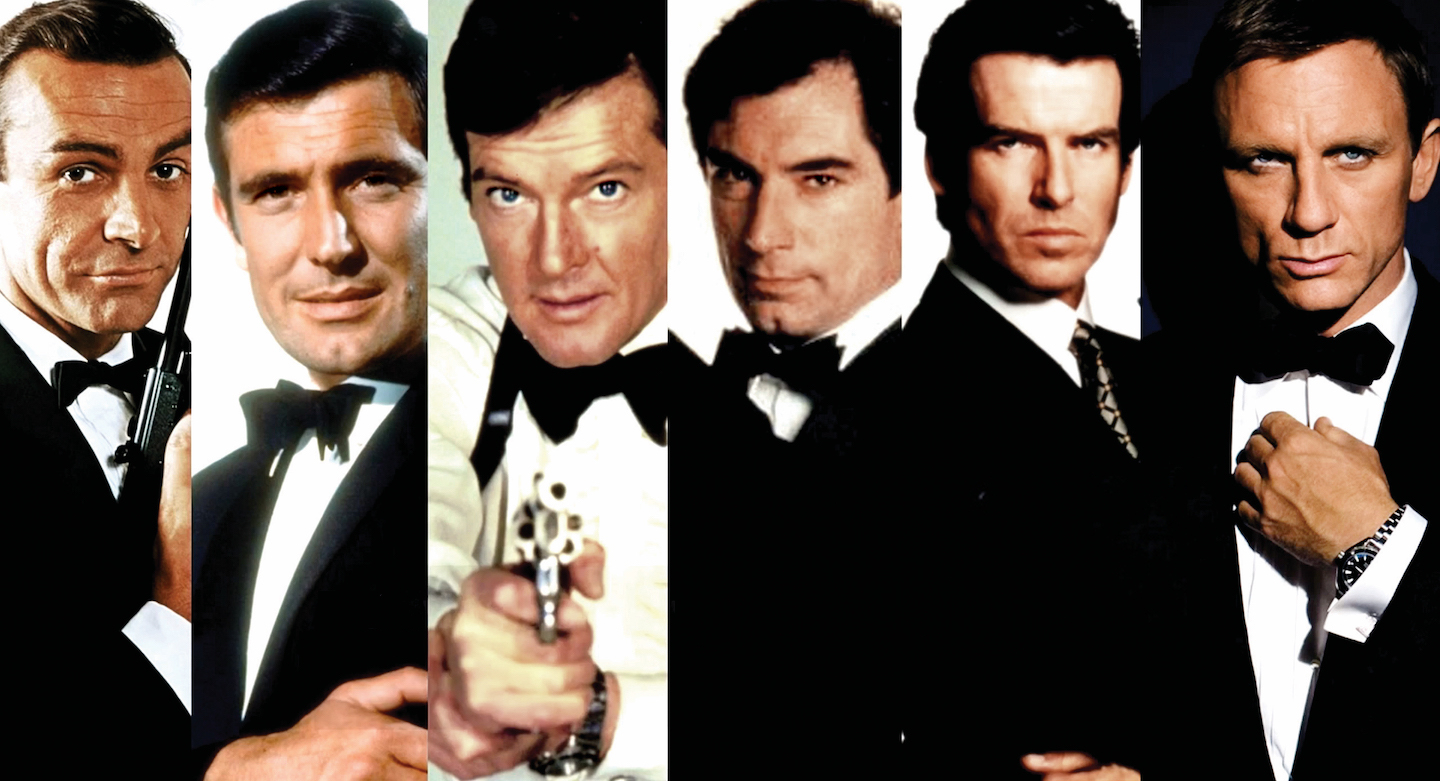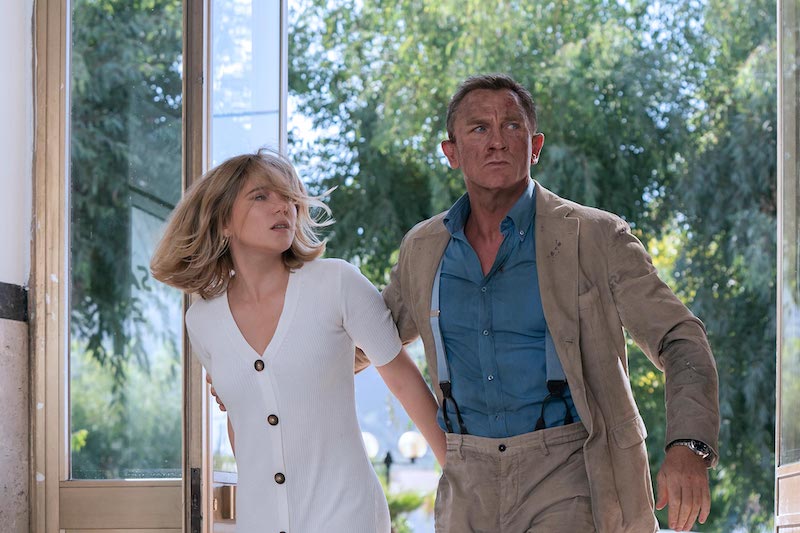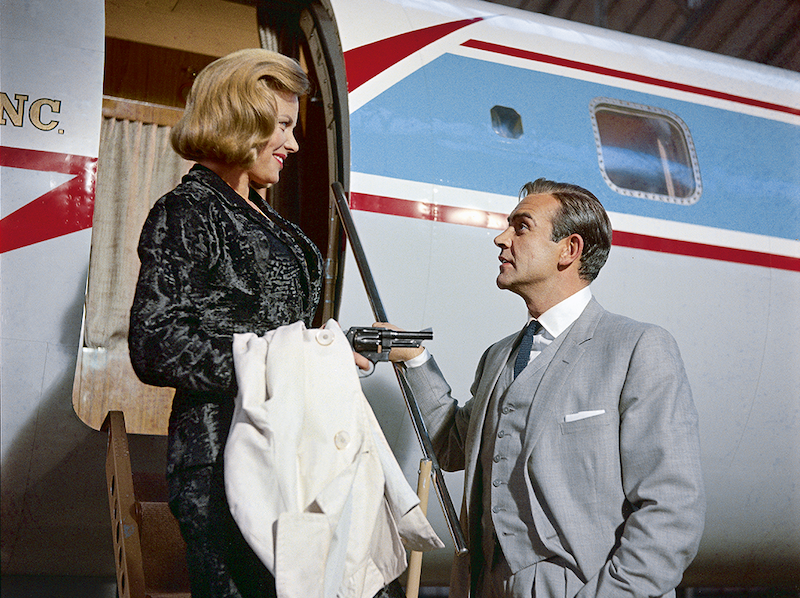
The six actors who played Bond (from left): Sean Connery, George Lazenby, Roger Moore, Timothy Dalton, Pierce Brosnan and Daniel Craig.
Sean Connery, George Lazenby, Roger Moore, Timothy Dalton, Pierce Brosnan and Daniel Craig — if there is one thing that all James Bond films can be relied on for, right from Dr No in 1963 to the upcoming No Time to Die, it is the unchanging narrative of an impossibly handsome secret agent who spends the whole two hours of the movie making all the right moves. Protector of the British empire, loyal servant of the Queen and MI6 star asset — we all love watching a winner, and that is why we all love a bit of James Bond.
But the winds of change have been blowing in 007’s direction for a while now, and even the most die-hard fans are forced to admit that the franchise is not what anyone would call an accurate representation of reality as it continually falls back on all-too-familiar tropes of stereotypical villains and Bond girls who cannot seem to resist the secret agent’s cheesy come-on lines. The franchise continues to pack theatres with the release of each subsequent film and few characters are quite as iconic, but one often wonders whether there is an evolutionary direction that it might have missed out on.
To celebrate the global release of the 27th Bond film after a year’s delay because of the pandemic, Astro broadcasted 25 James Bond movies produced by franchise owner EON Productions from Oct 15 to Nov 7 on Channel 407. While you do not need to have watched previous 007 movies to understand each consecutive one, it did give viewers a chance to see how the entire franchise has evolved over the years in terms of filmmaking, acting and characterisation.
The actors playing Bond are also some of the acting industry’s most interesting and accomplished, bringing to the role their unique personalities. The movies, by and large, are expressions of their time, and watching all 25 films in succession does put forth the effect the franchise, especially Bond himself, has had on popular culture — the well-cut suits that do not crinkle in the bloodiest of fights, fancy cars that are as gorgeous as they are fast, watches that not only tell the time but add much to one’s style quotient and, of course, the array of gadgets at 007’s disposal.
daniel_craig.jpeg

To understand why Bond is depicted in such a positive light, one must first look at what inspired the character in the first place. The Cold War had only just begun, and Britain was slowly coming to the realisation that it was no longer a world power. Creator Ian Fleming’s answer to this dip in morale was a world-famous superspy who was successful by conventional standards of the time — good-looking, gets the girl, destroys the bad guys and simultaneously gives British intelligence a one up as one of their star executives.
According to Fleming, his most famous literary creation was a creature of his era — smoking 70 custom-made cigarettes a day is an excess we cannot anymore forgive, for example, and his predatory behaviour towards women is also hard to watch in the era of the #MeToo movement — for example, when he forcefully kisses a female physiotherapist in Thunderball (1965) and forces himself on Pussy Galore in Goldfinger (1964). The depictions of Bond girls have also left a lot to be desired; they are often portrayed as nothing more than eye candy with an inability to resist Bond’s charms.
Credit must be paid when its due, though, and Moore retired from playing Bond for a very good reason: age, but not his own. “Well, the leading ladies were young enough to be my grand-daughter and it becomes disgusting,” he said in a 2014 interview.
In a bid to recast the Bond narrative, No Time to Die director Cary Fukunaga enlisted Fleabag writer and star Phoebe Waller-Bridge to help flesh out a cast of strong female characters in the latest flick. “You can’t change Bond overnight into a different person,” Fukunaga told The Hollywood Reporter earlier this year. “But you can definitely change the world around him and the way he has to function in that world. It’s a story about a white man as a spy in this world, but you have to be willing to lean in and do the work to make the female characters more than just contrivances.”
096a_james_bond_archives_xl_00399_gallery.png

Now that Craig is retiring from his role, franchise-owners Michael G Wilson and Barbara Broccoli have the responsibility of establishing what Bond should be like going forward, and what examples he should be seen to set. By looking within, so to speak, it will make the task of determining the next actor to play this truly iconic and well-loved character a little clearer. The last two Bond films have been a little darker in nature, so it does seem like we are headed into new territory of some sort with M slain and Bond opting to retire and, in No Time to Die, handing over the 007 moniker to someone new. But is this really the direction we want our superspy to take?
“Changing” Bond may not be something Fleming would approve of but, having passed on in 1964, he is not paying for movie tickets or buying into the hype — quite literally, as the money made from Bond merch soars with each new movie made. Would the young men who watched 007 growing up approve of their sons acting quite so lasciviously or, worse still, their daughters succumbing to such charms? There is no denying the intense satisfaction of watching the triumphing of good over evil in every Bond film and, of course, the pure entertainment value that comes from the effort poured in by the cast and crew of the many films over the years. But Bond can be better, and he should.
Reinventing James Bond requires careful distilling of what we loved most about the previous actors who played the role — Craig’s grit and tenacity, Brosnan’s wit and good humour, Lazenby’s vulnerability, Dalton’s sense of fun, and Moore’s tongue-in-cheek approach. Connery was, of course, vintage cool at its best. Broccoli has resolutely refused to discuss the new James Bond actor until the dust has settled on No Time to Die, but there are many names rumoured to be in the running — Tom Hardy, Cillian Murphy and Robert Pattinson are safe, and rather obvious, choices, while Dev Patel, Riz Ahmed, Regé-Jean Page and Daniel Kaluuya are better reflections of what British screen sirens are in this day and age.
Fleming may have been very specific about how James Bond looks and acts, but there is nothing to say that it cannot change in the transition from page to production. More than the comma-shaped lock of black hair that fell on his forehead and three-inch scar on his face, the character of Bond is one that needs to be in tune with the era in which he exists. This means that the person who plays his role, and the team behind the next film, must be too.
It is interesting to note that, at this juncture in history, with negative news of Covid and Brexit dominating headlines, Britain could once again do with the positive impact of a character such as Bond. But this hinges on making him more relatable, realistic and respectable — if you are going to depict someone as a model of British manners and suavity, he cannot be the Bond of the past.
We would hang on to his assortment of fast cars, nifty gadgets and the fancy watches, though. Some things are perfectly good as they are.
This article first appeared on Oct 11, 2021 in The Edge Malaysia.


